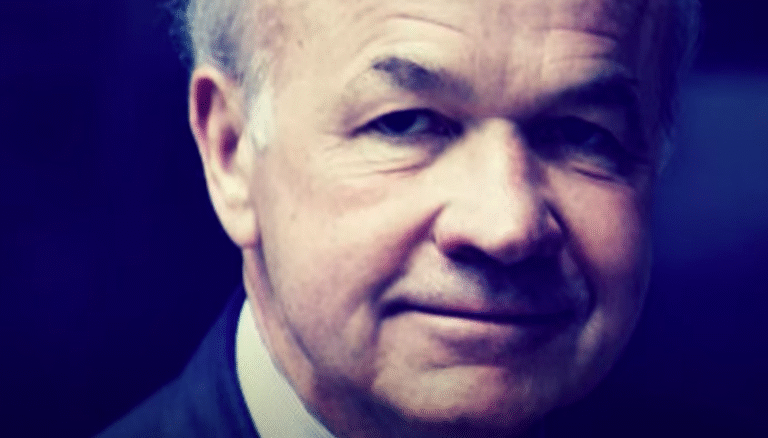We often remember great leaders for their ability, attitude and skills with which they took their ventures to unimaginable heights.
Not only are their stories highly inspiring but they help us becoming the best in our roles.
Having said that, we can equally learn from leaders who failed to make a mark and went down in the history books as ‘Bad Leaders’.
Poor leadership has destroyed countless businesses over the years, leaving behind cautionary tales of what happens when ego, incompetence, and poor decision-making take precedence over sound business practices.
These ten examples of ordinary leaders demonstrate how even the most successful companies can crumble under ineffective leadership.
Read on.
Also Read: Famous Unethical Leadership Examples
1. Dick Fuld – Lehman Brothers
Dick Fuld’s leadership of Lehman Brothers exemplified the dangerous combination of excessive risk-taking and stubborn refusal to adapt to changing market conditions.
His aggressive expansion into subprime mortgages and commercial real estate created massive exposure to toxic assets that he refused to acknowledge or address as the financial crisis unfolded.
Fuld’s confrontational leadership style and resistance to outside advice prevented the firm from raising capital or finding strategic partners that could have prevented its collapse.
His public statements downplaying the firm’s problems while privately knowing about massive losses demonstrated a level of denial and deception that contributed to the 2008 financial crisis and the destruction of a 158-year-old institution.
Also Read: Unethical Nonprofit Organizations Examples
2. Bernie Ebbers – WorldCom
Bernie Ebbers transformed WorldCom from a small long-distance carrier into a telecommunications giant through an acquisition spree that masked fundamental operational problems and unsustainable debt levels.
His growth-at-any-cost strategy relied on increasingly complex accounting manipulations to hide the company’s deteriorating financial condition.
Ebbers’ hands-on involvement in the accounting fraud, including directing subordinates to make improper entries to boost earnings, demonstrated a complete abandonment of ethical leadership.
His refusal to acknowledge the company’s problems and his continued pursuit of expensive acquisitions even as the business model collapsed led to the largest bankruptcy in U.S. history at the time.
This destroyed $180 billion in market value and 30,000 jobs while earning him a 25-year prison sentence.
Explore: Bad Company Culture Examples
3. Ken Lay – Enron
Ken Lay presided over one of the largest corporate frauds in American history, transforming Enron from an energy company into a house of cards built on accounting manipulation and deception.
His hands-off leadership style allowed a culture of aggressive risk-taking and ethical corner-cutting to flourish throughout the organization.
Lay either wilfully ignored or failed to understand the complex financial instruments and off-balance-sheet entities that his executives used to hide billions in debt and inflate profits.
His failure to provide proper oversight and his public statements defending the company’s practices even as it collapsed made him complicit in the destruction of thousands of jobs and retirement savings.
This ultimately lead to his conviction on fraud and conspiracy charges.
Check Out: Unethical Advertising Examples
4. Ron Johnson – JC Penney
Ron Johnson’s 17-month tenure as CEO of JC Penney represents one of the most disastrous retail transformations in business history.
His decision to eliminate the company’s traditional sales and coupon strategy in favor of “everyday low prices” alienated the core customer base without attracting new shoppers.
Johnson’s arrogant leadership style included making sweeping changes without testing them and dismissing concerns from employees who understood the customer base.
His radical store redesigns and elimination of popular brands created confusion and frustration among longtime customers, resulting in a 25% drop in sales and $985 million in losses during his brief tenure, ultimately leading to his termination and a desperate attempt to reverse his changes.
Check Out: Bad Advertising Examples
5. Travis Kalanick – Uber
Travis Kalanick’s leadership created a toxic corporate culture at Uber that prioritized growth at any cost while ignoring ethical concerns and legal compliance.
His aggressive “win at all costs” mentality led to numerous scandals including sexual harassment allegations, corporate espionage, and the systematic circumvention of local regulations worldwide.
Kalanick’s confrontational approach to regulators and competitors created unnecessary legal battles and damaged the company’s reputation.
His failure to establish proper governance and oversight allowed a culture of harassment and discrimination to flourish.
He was finally forced to resign. This resulted in years of expensive legal battles and regulatory challenges for the company.
Check Out: Bad CSR Examples
6. Carly Fiorina – Hewlett-Packard
Carly Fiorina’s leadership of Hewlett-Packard from 1999 to 2005 marked a period of strategic missteps and cultural destruction that damaged one of Silicon Valley’s most respected companies.
Her decision to acquire Compaq for $25 billion against significant board and shareholder opposition proved disastrous, leading to massive layoffs and integration problems that never delivered the promised synergies.
Fiorina’s aggressive, top-down management style clashed with HP’s collaborative culture, leading to the departure of key executives and engineers.
Her focus on marketing and image over engineering excellence alienated the technical workforce and customers, resulting in declining market share and stock performance that ultimately led to her forced resignation.
Also Read: Companies With Bad Marketing Examples
7. Elizabeth Holmes – Theranos
Elizabeth Holmes built Theranos on a foundation of lies and deception, claiming her company could revolutionize blood testing with technology that simply didn’t work.
Despite raising over $900 million and achieving a peak valuation of $9 billion, Holmes consistently misled investors, patients, and employees about the capabilities of her blood-testing devices.
Her authoritarian leadership style created a culture of fear and secrecy that prevented employees from raising legitimate concerns about the faulty technology.
The company’s collapse resulted in criminal fraud charges for Holmes, endangering patient lives through inaccurate test results, and representing one of the most spectacular failures in Silicon Valley history.
Also Read: Epic Design Fails In Advertising
8. John Sculley – Apple
John Sculley nearly destroyed Apple during his tenure as CEO, transforming the innovative company into a commodity computer maker that lost its competitive edge and market position.
After orchestrating the ouster of co-founder Steve Jobs, Sculley pursued a strategy of releasing numerous confusing product lines that cannibalized each other and confused consumers.
His focus on short-term profits over long-term innovation led to a decline in Apple’s technological leadership and market share, dropping from 16% to just 4% during his tenure.
Sculley’s inability to understand the technology industry and his failure to maintain Apple’s culture of innovation nearly resulted in the company’s bankruptcy before Jobs’ eventual return.
Explore: Most Common Leadership Styles
9. Adam Neumann – WeWork
Adam Neumann transformed WeWork from a promising co-working space company into a cautionary tale of unchecked founder power and financial recklessness.
His erratic behavior included bizarre decision-making processes, excessive partying during work hours, and creating a toxic work environment that included mass layoffs delivered via video call.
Neumann’s financial mismanagement was staggering, with the company burning through billions while he personally profited from questionable real estate deals and stock sales.
His leadership style was characterized by nepotism, self-dealing, and an inability to articulate a coherent business strategy, ultimately leading to the company’s failed IPO attempt and his forced resignation as CEO.
10. Gerald Ratner – Ratners Group
Gerald Ratner destroyed his family’s successful jewelry business empire with a single speech that demonstrated catastrophic leadership judgment and complete disconnection from his customer base.
At a 1991 conference, Ratner joked that his products were “total crap” and compared a decanter set to “an M&S prawn sandwich but probably wouldn’t last as long.”
His comments, widely reported in the media, instantly destroyed customer confidence and trust in the brand.
The speech wiped £500 million off the company’s value and led to the closure of hundreds of stores.
Ratner’s failure to understand that his success depended on customers believing they were getting value for money showed a fundamental misunderstanding of retail psychology and brand management.
Also Read: Organizational Culture Examples To Inspire
Conclusion
These examples demonstrate that leadership failures can destroy even the most successful companies.
Whether through fraud, incompetence, cultural toxicity, or strategic blindness, these leaders share common traits: disconnection from reality, resistance to feedback, prioritizing personal interests over stakeholder welfare, and failure to adapt to changing circumstances.
Their stories serve as essential reminders that effective leadership requires humility, integrity, and the wisdom to recognize when change is necessary.
Enjoyed the post?

















